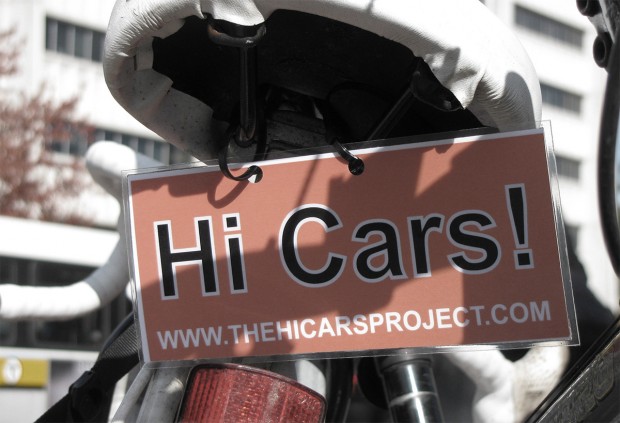Networked Urbanism
design thinking initiatives for a better urban life
apps awareness bahrain bike climate culture Death design digital donations economy education energy extreme Extreme climate funerals georeference GSD Harvard interaction Krystelle mapping market middle east mobility Network networkedurbanism nurra nurraempathy placemaking Public public space resources Responsivedesign social social market Space time time management ucjc visitor void waste water Ziyi
The Hi Cars! Project is an attempt to change the tenor of how cars and bikes interact on the streets of Boston-by focusing on the people in them. We know that saying hi won’t solve all of our problems with sharing the road and that we also have to work for better infrastructure, better enforcement, and better safety education for drivers and cyclists, but we also know there is something powerful in the attitude adjustment that comes with taking a more playful, conversational approach.
 What would happen if cyclists tried saying “Hi Cars!” I cycled arterial roads, stopped at every red light, and resolved to be as civil as possible. Suprisingly, I found car drivers waving at me. I did not take the sign off my bike or my bag. People kept asking me about them, and then asking questions about sharing the road. I had some great conversations. Also, it forced me to be a better road user. I had a giant sign saying Hi Cars! on. You can’t run a red light when you’re calling attention to yourself like that.I then made more durable, attractive signs and distributed them to a group of student volunteers. Their experiences are documented below.
What would happen if cyclists tried saying “Hi Cars!” I cycled arterial roads, stopped at every red light, and resolved to be as civil as possible. Suprisingly, I found car drivers waving at me. I did not take the sign off my bike or my bag. People kept asking me about them, and then asking questions about sharing the road. I had some great conversations. Also, it forced me to be a better road user. I had a giant sign saying Hi Cars! on. You can’t run a red light when you’re calling attention to yourself like that.I then made more durable, attractive signs and distributed them to a group of student volunteers. Their experiences are documented below.
Helen reports: “In addition to serving as a cover when the wet roads decide to spit at me, my ‘Hi Cars’ sign has inspired lots of conversations with people – friends and strangers alike – who see the sign on my backpack. These conversations occur when I’m NOT on my bike – probably because talking is much easier when you’re not simultaneously navigating your livelihood among faster metal vehicles! Although discussions tend to be short, I’ve had a few conversation that went on for over 5 minutes – dipping into bicycling etiquette, pedestrian rights, and winter bicycling. While on my bike, I’ve only had two conversations with other bicyclist who speed past me while I’m stopped at the red light. They shout ‘hi cars’ while I’ve resumed the good habit of following the rules of the street – as though I’m driving and that is the result of knowing that on my backpack – cars are watching!”
Julie reports: “While I did not have any cars honk or drivers roll down their windows to say hello in return, I was asked quite a few questions in class and around campus. People wanted to know what the sign meant and why I was wearing it – my response was that a fellow classmate was examining the relationship and conversation between cars and bikes in sharing the road. In addition, it changed my behavior as a biker. I was much more conscious about wearing my helmet and bike lights. I tried to stop more frequently at stop signs and obey the rules of the road because I felt accountable for good behavior as a sign-wearer.